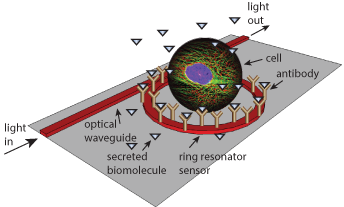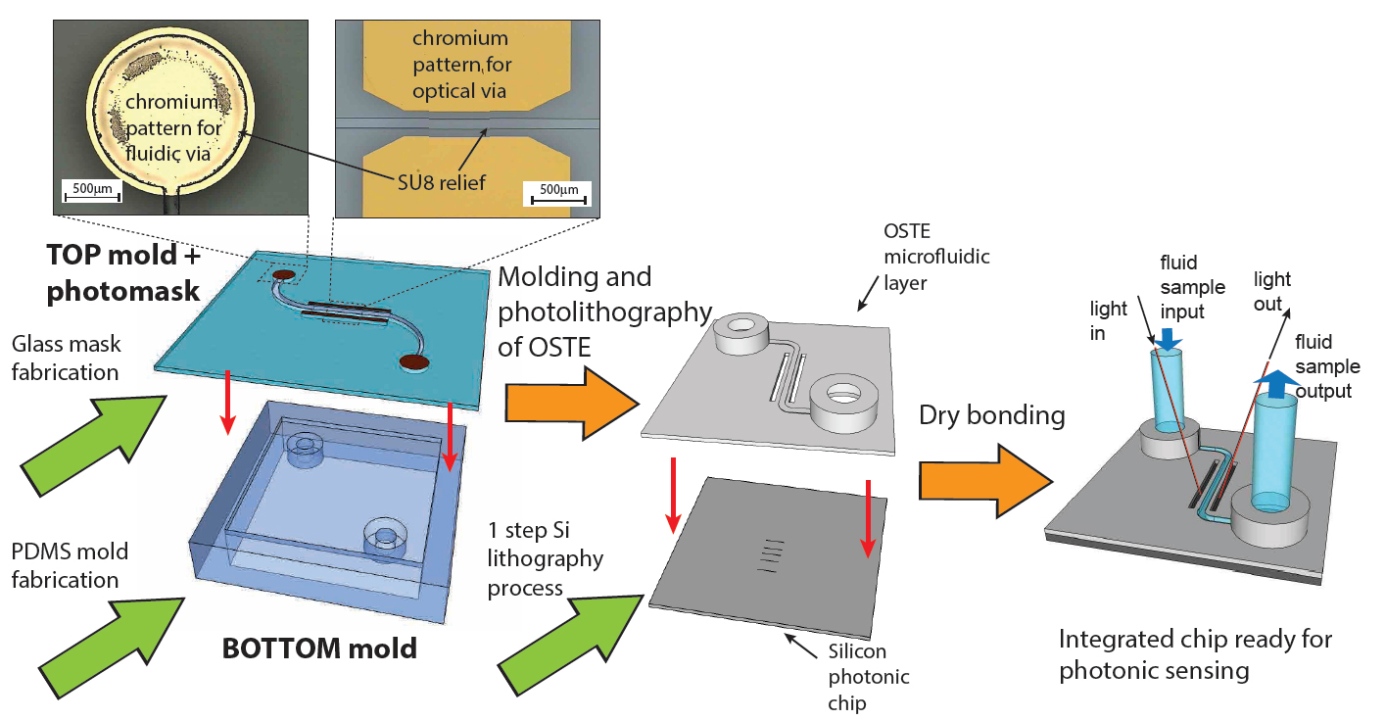Cell-Ring - Close proximity photonic sensing of single-cell secretion
Biological processes are dynamic and involve the interactions of cells with each other and their environment. To study the dynamics of cell signaling, measurements at the single cell level are necessary, since intra population variability and diffusion limitations tend to smear out the aggregate biochemical response of large cell populations. The aim of the Cell-Ring project is to create a nano-photonic sensor to study the biomolecule secretion of single cells in real-time.
Duration: 2012-2017

Label-free biosensors are uniquely suited for monitoring biomolecular dynamics in real-time. However, current sensors are not able to resolve the minute amount of protein secreted from single cells. By virtue of their cell-like dimensions, nano-photonic sensors are able to sample the secreted biomaterial close to the cell. In combination with their low protein mass detection limit, their small size gives these sensors a unique potential for resolving the signaling dynamics.
The aim of the Cell-Ring project is to develop a Lab-on-a-Chip, in which nano-photonic sensors are integrated with a microfluidic cell and liquid handling system. By novel design and fabrication approaches, we aim to improve the detection limit of the photonic sensors, to be able to measure even proteins secreted at low levels with a useful time resolution. Such a tool enables the direct study of the cell´s biochemical signaling in response to stimuli, and is thus of great interest for fundamental research in biology and for drug development, in particular.
In order to fabricate the complete Lab-on-a-Chip system, we develop a novel method for the integration of polymer microfluidics and cell handling with silicon photonic sensors, compatible with wafer scale production methods. The microfluidics layer was fabricated in a single step in the recently introduced OSTE polymer and dry-bonded to silicon photonic sensors. This integration method can match the microfluidics to the size scale of current photonic silicon sensors.

Project sponsor
Swedish Research Council (Vetenskapsrådet)
Project partner
Project members
Publications related to this project
- Roadmap for optofluidics
- MEMS tunable silicon photonic grating coupler for post-assembly optimization of fiber-to-chip coupling
- Photonic ring resonators for biosensing
- Integration of polymer based microfluidics with silicon photonics for biosensing applications
- Close proximity real-time photonic sensing of single-cell biomolecule secretion
